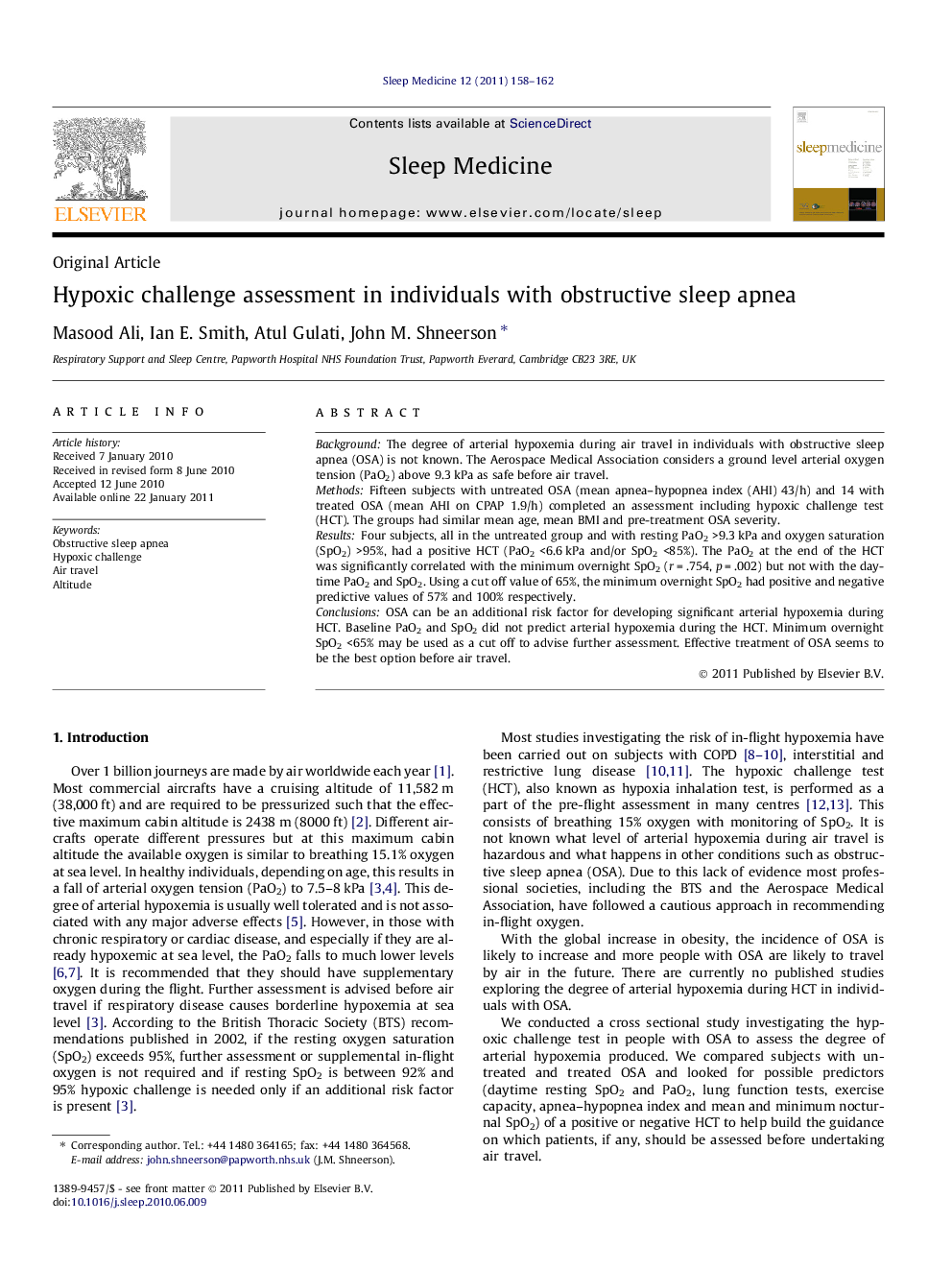| Article ID | Journal | Published Year | Pages | File Type |
|---|---|---|---|---|
| 3176403 | Sleep Medicine | 2011 | 5 Pages |
BackgroundThe degree of arterial hypoxemia during air travel in individuals with obstructive sleep apnea (OSA) is not known. The Aerospace Medical Association considers a ground level arterial oxygen tension (PaO2) above 9.3 kPa as safe before air travel.MethodsFifteen subjects with untreated OSA (mean apnea–hypopnea index [AHI] 43/h) and 14 with treated OSA (mean AHI on CPAP 1.9/h) completed an assessment including hypoxic challenge test (HCT). The groups had similar mean age, mean BMI and pre-treatment OSA severity.ResultsFour subjects, all in the untreated group and with resting PaO2 >9.3 kPa and oxygen saturation (SpO2) >95%, had a positive HCT (PaO2 <6.6 kPa and/or SpO2 <85%). The PaO2 at the end of the HCT was significantly correlated with the minimum overnight SpO2 (r = .754, p = .002) but not with the daytime PaO2 and SpO2. Using a cut off value of 65%, the minimum overnight SpO2 had positive and negative predictive values of 57% and 100% respectively.ConclusionsOSA can be an additional risk factor for developing significant arterial hypoxemia during HCT. Baseline PaO2 and SpO2 did not predict arterial hypoxemia during the HCT. Minimum overnight SpO2 <65% may be used as a cut off to advise further assessment. Effective treatment of OSA seems to be the best option before air travel.
